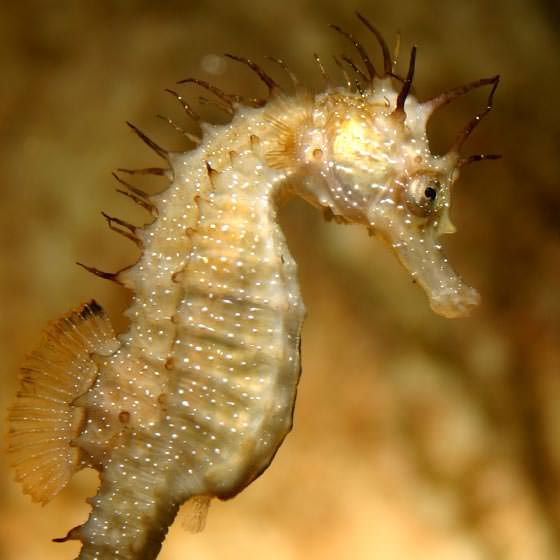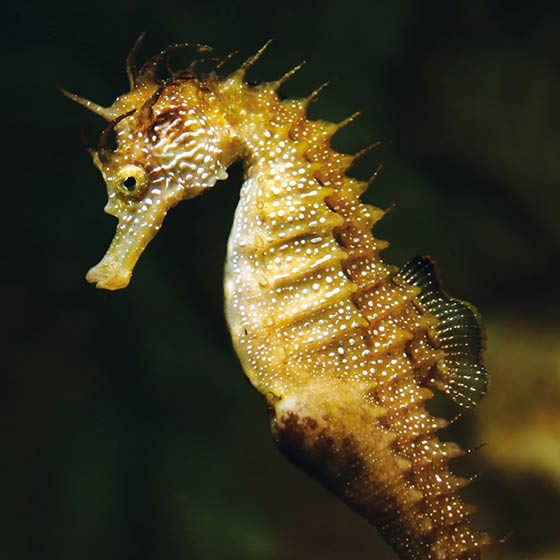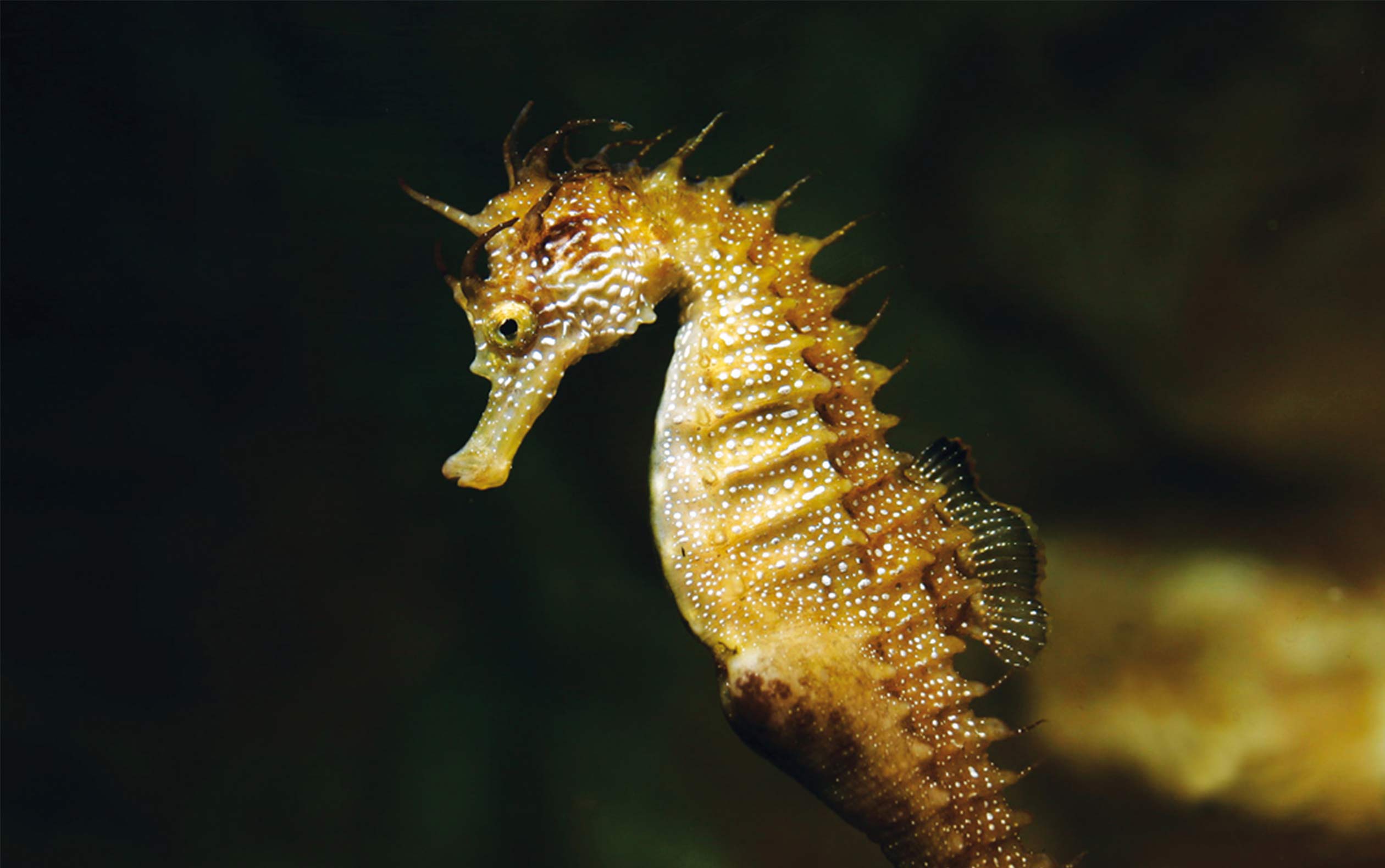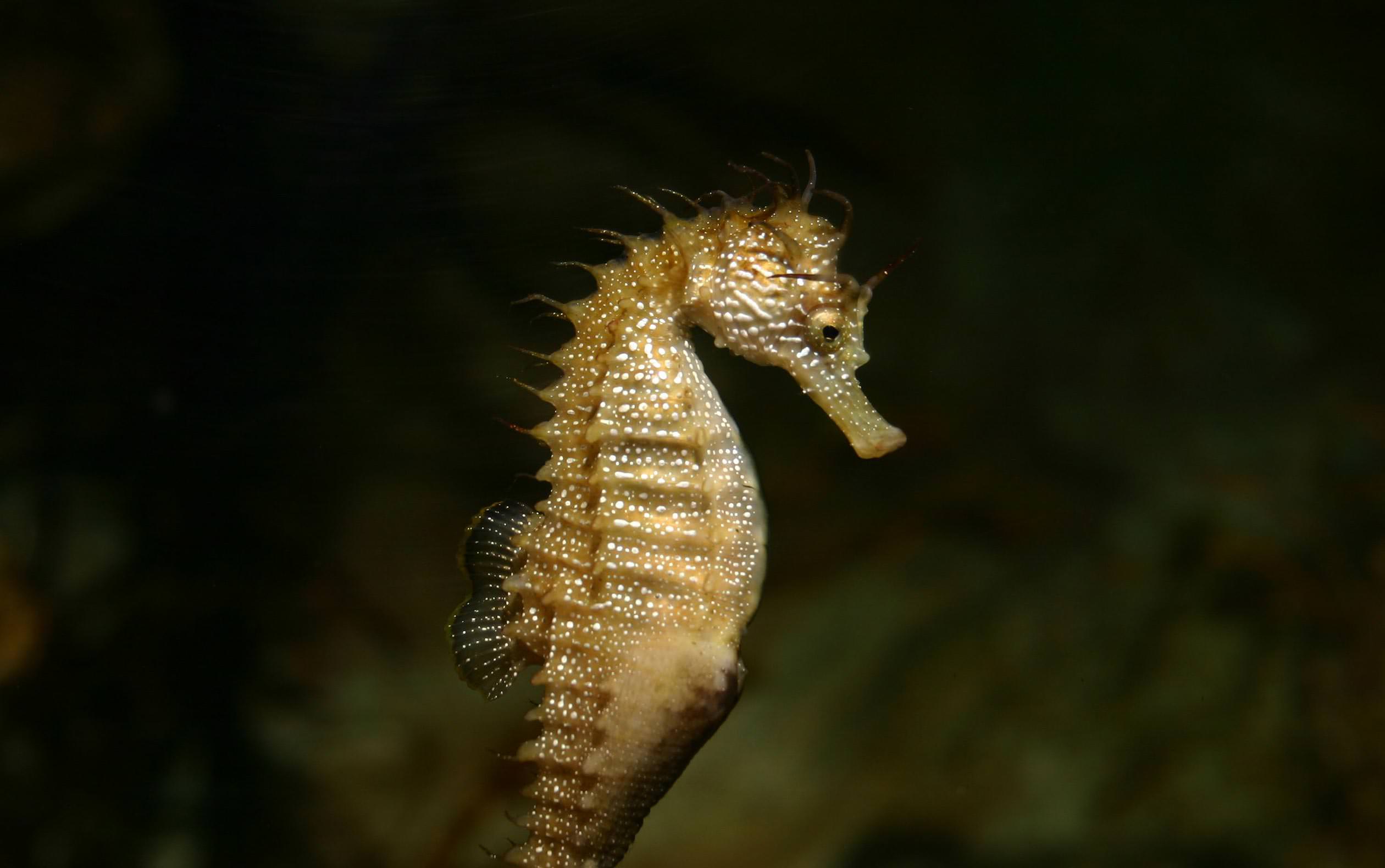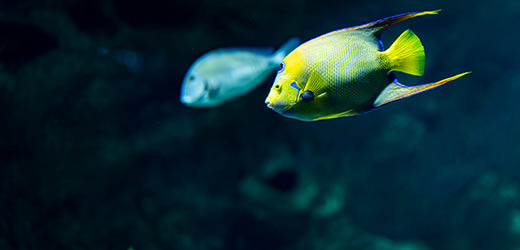Biology
The long-snouted seahorse differs from other species for its long muzzle, a body sprinkled with white spots, and characteristic dermal cirri growing out of its head and dorsal ridge.
Its body colour can vary widely, ranging from dark brown to beige and sometimes even bright yellow or reddish. Like other species of seahorse, its body is covered with bony plates laid out in rings.
The long-snouted seahorse lives near eelgrass or posidonia meadows. It is a bottom-dweller, attaching itself to algae with its prehensile tail. It feeds on zooplankton (crustaceans and fish eggs and larvae) that it inhales using its pipette shaped mouth.
